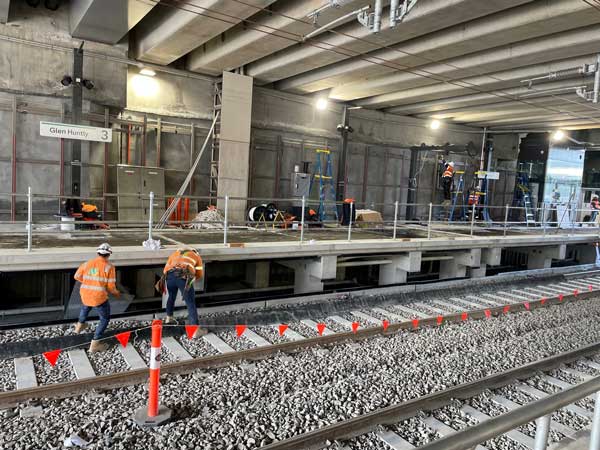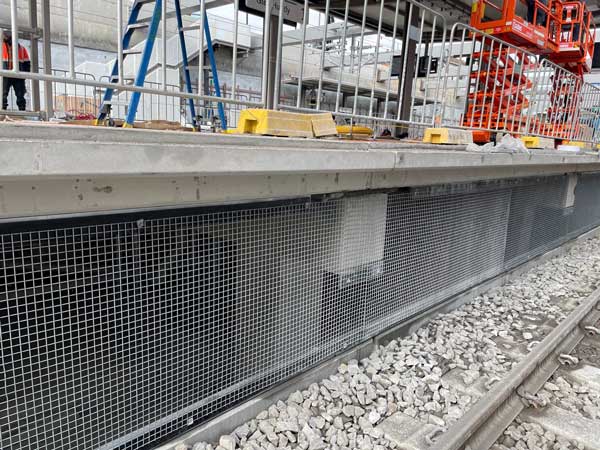Project Overview
As part of the construction of a new railway station in Victoria, Australia, the project team required a practical solution to close the gap between the railway track and the precast concrete platform. To achieve this, stainless steel mesh panels were bolted to a galvanised steel framework that had been fixed to the edge of the platform structure.
While the mechanical design was straightforward, the construction company identified a critical long-term durability issue: the risk of galvanic corrosion between the two dissimilar metals; stainless steel and galvanised steel.
The Challenge
When dissimilar metals like stainless steel and galvanised steel come into direct contact, especially in the presence of moisture, they create a galvanic cell. This electrochemical

reaction causes the less noble metal, in this case, the zinc layer of the galvanised steel, to corrode at an accelerated rate. Over time, this could lead to structural degradation, loss of integrity in the frame, and expensive maintenance or replacement.
The project required a simple, reliable method to prevent this galvanic reaction while also ensuring fast installation under strict time constraints.
Solution: Neoprene 65 Rubber Strips were installed as an Isolation layer between dissimilar metals.
Reglin supplied Neoprene 65 Rubber Strip, a high-quality general-purpose rubber strip with 30% polymer content, known for its resistance to weathering and its dielectric insulating properties. This rubber was an ideal isolator to prevent direct contact between the stainless steel mesh and galvanised frame.
To further streamline installation, the rubber strip was factory-laminated with a pressure-sensitive self-adhesive backing. This allowed the strip to be pre-applied to the steel frame, holding it securely in place while the mesh panels were aligned and fastened removing the need for temporary fixing methods on site.
Over 1500 linear metres of 3mm x 75mm adhesive-backed Neoprene 65 rubber strip were supplied for the project, enabling fast and efficient progress during the critical installation phase.
Outcome
The Neoprene isolation strip provided an effective barrier between dissimilar metals, protecting against galvanic corrosion in a high-moisture railway environment. Its ease of application using the self-adhesive backing significantly reduced installation time, improving productivity for the contractor. The solution also ensured long-term durability and corrosion protection for this important piece of public infrastructure.

